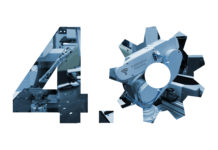by Antonino Bonanno

The surrounding world is changing. All of us are realizing it: battery-powered vehicles, robots that collaborate with workers and notably facilitate their work, higher environmental awareness that leads consumers to choose products according to their energy efficiency, too. The European Commission, inspired by these factors, has started wondering: “how will industry evolve from now until 2030?” To answer this question, they have organized a roundtable attended by outstanding players in the European industrial world. The details have been published in the report “A vision for the European industry until 2030” you can surf in internet. The first point highlighted in this paper concerns the impact exerted by extreme digitalization and automation on the industrial manufacturing in the next future. 3D printing and IoT will be the pillars of the next transformation of the European productive system. The base concept that will drive this evolution will be “doing more with less”, i.e. reducing the use of natural resources while enhancing at best the potentialities deriving from the circular economy, that is to say the reuse of raw materials to give them new life. Therefore, enterprises will be called to deal with new requirements, integrating policies of machining waste reuse, of self-generation of the in-house used energy and of better control of the energy impact of their manufacturing cycle. According to an agreement, established in the distant 2014 between CNR and MISE, I have been appointed scientific evaluator of the projects funded in the various calls issued by the Ministry. Well, many of the projects I had the opportunity to assess have focused on the above-mentioned issues. The Italian industry is evolving hand in hand with the guidelines of the European industrial policy. However, to implement the 2030-vision, that is to say the new European industrial policy, we must be aware of the long-term structural transformations (including the accomplishment of sustainable development targets) that are taking place and are changing the world. Only in this way the Italian industry will be able to face the challenges issued by new technologies, so seizing their opportunities. According to the study I have mentioned at the beginning, in 2018 for the first time Europe succeeded in surpassing United States in terms of industrial innovation, showing better performances than what initially expected. Nevertheless, in these matters the gap with world leader Countries (Japan, Canada but especially South Korea) remains big. Technologies, and the eco-system that supports their diffusion, are quickly developing. Hyper-connectivity is rapidly expanding: over 4 billion people use Internet worldwide; more than 5 billion inhabitants currently own a mobile phone (penetration by 68%); 3.2 billion users of social media are active all over the world, with an average of 11 new users per second in 2017. The Italian industry will have to take all of these things into account, necessarily.



